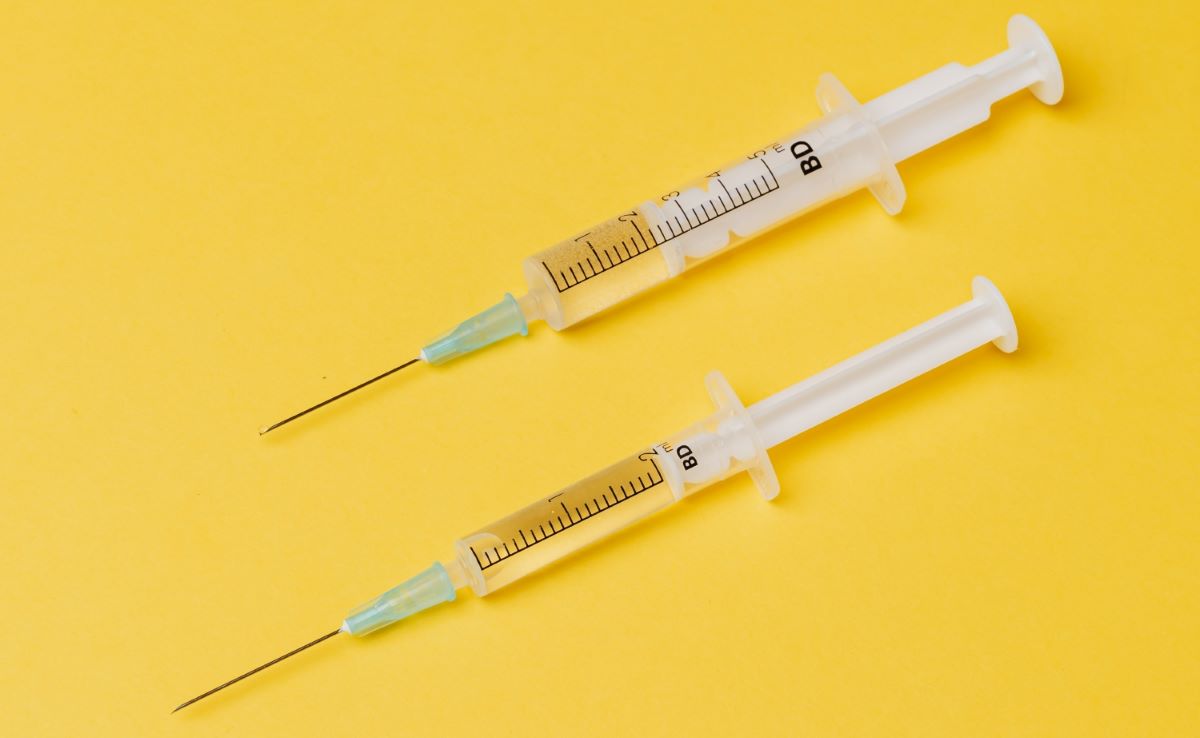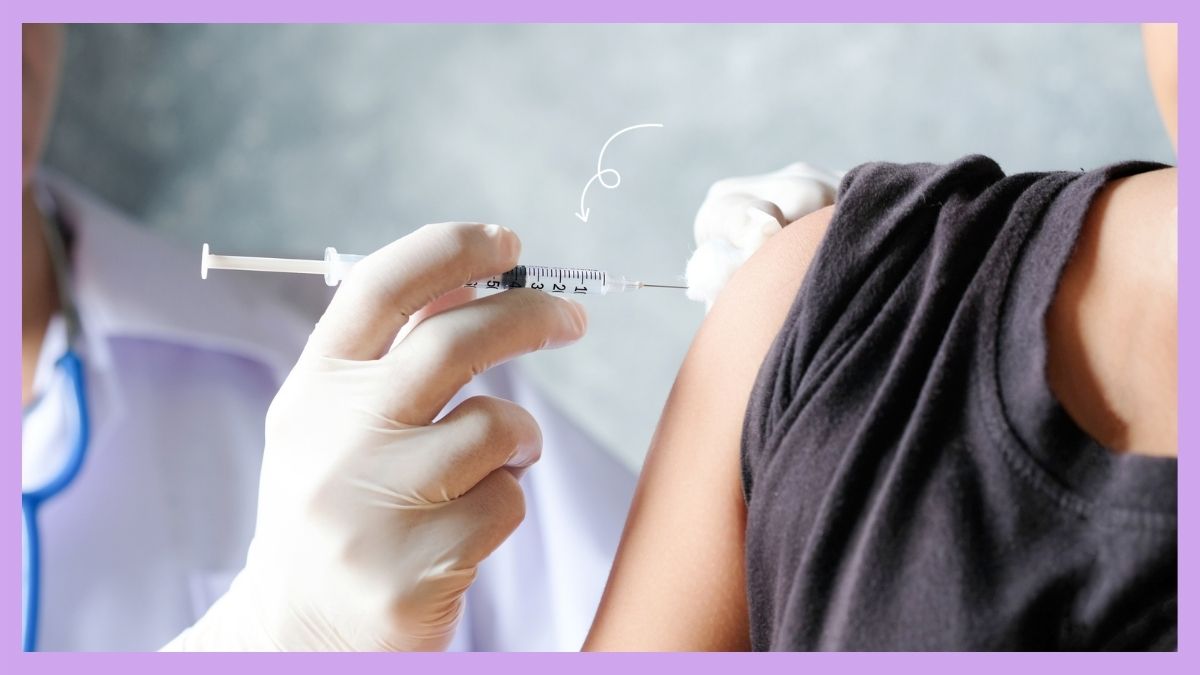

Finance
How Much Is A Cortisone Shot With Insurance?
Published: November 6, 2023
Discover the cost of a cortisone shot with insurance and manage your expenses with our finance tips and advice.
(Many of the links in this article redirect to a specific reviewed product. Your purchase of these products through affiliate links helps to generate commission for LiveWell, at no extra cost. Learn more)
Table of Contents
- Introduction
- What is a cortisone shot?
- The benefits of cortisone shots
- Does insurance cover cortisone shots?
- Factors that affect the cost of cortisone shots with insurance
- How much can you expect to pay for a cortisone shot with insurance?
- Tips for maximizing insurance coverage for cortisone shots
- Conclusion
Introduction
When it comes to managing pain and inflammation in joints, a cortisone shot can be a game-changer. Whether you’re dealing with arthritis, tendonitis, or bursitis, a cortisone shot delivers a potent dose of corticosteroid medication directly into the affected area, providing fast and targeted relief.
However, one important question often comes up – how much does a cortisone shot with insurance cost? Insurance coverage for medical treatments can vary greatly, and it’s crucial to understand what to expect when it comes to the financial aspect of receiving a cortisone shot.
In this article, we’ll delve into the world of cortisone shots, exploring their benefits, insurance coverage, and factors that can affect the cost. Additionally, we’ll provide some helpful tips for maximizing your insurance coverage and ensuring you receive the best possible financial assistance for your cortisone shot.
Whether you’re considering a cortisone shot or just curious about the financial implications, this article will guide you through the process and help you make informed decisions while taking care of your joint health.
What is a cortisone shot?
A cortisone shot, also known as a corticosteroid injection, is a common treatment option for reducing pain and inflammation in joints and soft tissues. It involves injecting a corticosteroid medication, such as cortisone, directly into the affected area.
Corticosteroids are powerful anti-inflammatory medications that mimic the actions of hormones naturally produced by the body. They work by suppressing the immune response and reducing inflammation, providing relief from pain and swelling. Cortisone shots are typically administered by healthcare professionals, such as orthopedic doctors or rheumatologists, in outpatient settings.
These injections are commonly used to treat conditions such as arthritis, tendinitis, bursitis, and other inflammatory conditions. They are particularly effective when other conservative treatments like rest, physical therapy, and oral medications have not provided sufficient relief.
During the procedure, the healthcare provider will clean the injection site with an antiseptic solution and may use a local anesthetic to numb the area before administering the cortisone shot. The needle used for the injection is typically small and precise, minimizing discomfort.
The cortisone medication is injected directly into the joint or affected tissue, targeting the specific area causing pain and inflammation. The effects of the cortisone shot can vary from person to person but are generally noticeable within a few days to a week. The duration of pain relief can vary as well, ranging from a few weeks to several months.
It’s important to note that while cortisone shots can provide significant pain relief, they are not a cure for the underlying condition. The purpose of these injections is to manage symptoms and provide temporary relief, allowing patients to engage in rehabilitation exercises and regain functionality.
With the understanding of what a cortisone shot entails, let’s move on to exploring the benefits of this treatment option and why it is favored by healthcare professionals and patients alike.
The benefits of cortisone shots
Cortisone shots offer several benefits for individuals dealing with pain and inflammation in their joints and soft tissues. Here are some of the key advantages of this treatment option:
- Pain relief: One of the primary benefits of cortisone shots is their ability to provide rapid and targeted pain relief. The corticosteroid medication injected directly into the affected area helps to reduce inflammation, alleviating pain and discomfort.
- Reduced inflammation: Cortisone shots are highly effective at reducing inflammation in the joints. By suppressing the immune response and blocking the release of inflammatory substances, these injections can significantly reduce swelling and stiffness, improving overall joint function.
- Improved mobility: Chronic joint pain and inflammation can severely limit mobility and affect daily activities. Cortisone shots can help restore mobility by relieving pain and reducing swelling, allowing individuals to engage in physical therapy and regain functionality.
- Non-surgical option: For many individuals, cortisone shots provide a non-surgical alternative for managing pain and inflammation. These injections can delay or eliminate the need for more invasive procedures, such as joint surgery, making them an attractive option for those seeking conservative treatment options.
- Convenience and speed: Cortisone shots can be administered in a healthcare provider’s office or outpatient setting, requiring minimal time and offering quick relief. Compared to other treatment methods, such as oral medications or physical therapy, cortisone shots provide faster results with less time commitment.
- Localized treatment: Unlike oral medications that affect the entire body, cortisone shots deliver medication directly to the affected area. This targeted approach ensures that the medication reaches the site of inflammation, maximizing its effectiveness and minimizing potential side effects on other parts of the body.
- Customizable treatment plan: Cortisone shots can be tailored to individual needs. The healthcare provider can determine the frequency and dosage of injections based on the severity of symptoms and the patient’s response. This personalized approach allows for a more effective and customized treatment plan.
Overall, cortisone shots provide an effective and efficient way to manage pain and inflammation in joints and soft tissues. The next section will explore whether insurance coverage is available for cortisone shots and what factors can affect the cost when using insurance.
Does insurance cover cortisone shots?
Insurance coverage for cortisone shots can vary depending on the specific insurance plan and the individual’s policy. In general, most insurance plans do provide coverage for cortisone shots as part of their benefits for medical treatments. However, it’s important to check with your insurance provider to fully understand what is covered under your plan and any associated costs.
Insurance plans typically fall into two categories: private insurance and government-sponsored insurance programs such as Medicare and Medicaid. Private insurance plans, which are obtained through an employer or purchased individually, may have different coverage policies for cortisone shots. The coverage and associated costs can vary based on factors such as the specific plan, deductible, co-pays, and coinsurance.
For government-sponsored insurance programs, coverage policies for cortisone shots are generally more standardized. Medicare, the federal health insurance program for individuals aged 65 and older, typically covers cortisone shots deemed medically necessary, but may require documentation and proof of medical necessity. Medicaid, the state and federal program that provides health coverage for low-income individuals, may also cover cortisone shots but specific coverage policies will vary by state.
It is important to note that even if insurance covers cortisone shots, there may still be out-of-pocket costs for the individual. This could include deductible payments, co-pays, or coinsurance. The amount of these costs will vary depending on the insurance plan and the specific terms of coverage.
Prior to receiving a cortisone shot, it is advisable to contact your insurance provider to verify coverage and understand any associated costs. This will help you make informed decisions and avoid any surprises when it comes to payment.
Now that we’ve covered the basics of insurance coverage for cortisone shots, let’s explore some of the factors that can affect the cost of cortisone shots with insurance.
Factors that affect the cost of cortisone shots with insurance
The cost of cortisone shots with insurance can vary depending on several factors. Understanding these factors can help you estimate and plan for any out-of-pocket expenses associated with receiving cortisone shots. Here are some key factors that can affect the cost:
- Insurance plan: The type of insurance plan you have can significantly impact the cost of cortisone shots. Different insurance providers may have varying coverage policies, deductibles, co-pays, and coinsurance. It’s important to review your specific insurance plan to understand the associated costs.
- Provider network: Insurance plans often have a network of preferred healthcare providers. Receiving a cortisone shot from an in-network provider can typically result in lower out-of-pocket costs compared to an out-of-network provider. It’s advisable to check with your insurance provider to find a network provider for your cortisone shot.
- Treatment location: The location where you receive the cortisone shot can also affect the cost. For example, receiving the injection at a hospital or outpatient facility may have different cost implications compared to receiving it at a doctor’s office. It’s essential to confirm with your insurance provider the coverage and associated costs for each potential treatment location.
- Medical necessity: Insurance coverage for cortisone shots may require proof of medical necessity. The healthcare provider may need to provide documentation or specific information to your insurance company to justify the need for the treatment. It’s important to discuss this with your healthcare provider and ensure they have a clear understanding of your insurance requirements.
- Deductibles and cost-sharing: Your insurance plan may have a deductible that needs to be met before coverage for cortisone shots kicks in. Additionally, co-pays or coinsurance may be required, where you are responsible for a percentage of the cost of the injection. Understanding these cost-sharing mechanisms is crucial in estimating the overall cost of cortisone shots.
- Other services received: If you undergo additional tests or procedures in conjunction with the cortisone shot, such as imaging or laboratory tests, these may also impact the overall cost. It’s important to discuss with your healthcare provider the necessity and potential costs of any additional services.
Remember, it’s essential to contact your insurance provider to understand the specific terms and coverage of your plan. They can provide detailed information about the factors that will affect the cost of cortisone shots and give you a clearer picture of your out-of-pocket expenses.
Next, let’s dive into the question you’ve been waiting for – how much can you expect to pay for a cortisone shot with insurance?
How much can you expect to pay for a cortisone shot with insurance?
The cost of a cortisone shot with insurance can vary depending on factors such as your insurance plan, deductible, co-pays, and coinsurance. While it’s difficult to provide an exact cost estimate without specific insurance information, we can give you a general idea of what to expect.
On average, the cost of a cortisone shot with insurance can range from $50 to $200 per injection. However, this cost can increase if additional services, such as imaging or laboratory tests, are required. Keep in mind that these figures are estimates, and actual costs may vary based on your insurance coverage and specific circumstances.
It’s important to review your insurance plan documents or reach out to your insurance provider to understand your plan’s coverage for cortisone shots. This information will help you assess any potential deductible payments, co-pays, or coinsurance that may apply to the injections.
Moreover, it’s also worth noting that the total cost of cortisone shots can depend on the number of injections required. Depending on the severity of your condition, multiple injections may be recommended to achieve optimal results. Each additional injection will incur an additional cost.
If the cost is a concern for you, it’s best to discuss your financial situation with your doctor or healthcare provider. They may be able to provide alternative treatment options or work with you to develop a payment plan that fits your budget.
Finally, it’s important to keep in mind that insurance coverage and costs can change over time. It’s a good practice to check with your insurance provider periodically to stay informed about any updates or changes in coverage that may affect the cost of cortisone shots.
Now that we have covered the cost aspect, let’s move on to some tips for maximizing your insurance coverage for cortisone shots.
Tips for maximizing insurance coverage for cortisone shots
Receiving a cortisone shot can be a valuable investment in managing pain and inflammation. To help you make the most of your insurance coverage for cortisone shots, consider these tips:
- Review your insurance plan: Take the time to thoroughly understand your insurance plan and its coverage for cortisone shots. Familiarize yourself with the details, such as deductibles, co-pays, and coinsurance. Understanding your plan’s terms will give you a better idea of your financial responsibilities.
- Choose in-network providers: When scheduling your cortisone shot, try to select healthcare providers who are in-network with your insurance plan. In-network providers typically have agreed-upon rates with the insurance company, which can result in lower out-of-pocket costs for you.
- Obtain pre-authorization: Inquire with your insurance provider if pre-authorization is required for cortisone shots. Pre-authorization involves obtaining approval from your insurance company before receiving the treatment. Failure to obtain pre-authorization, if required, may result in a denial of coverage or increased out-of-pocket costs.
- Optimize medical documentation: Work closely with your healthcare provider to ensure accurate and comprehensive medical documentation supporting the medical necessity of cortisone shots. This documentation can help streamline the claims process and avoid potential denials or disputes with your insurance company.
- Utilize flexible spending accounts (FSAs) or health savings accounts (HSAs): If available, consider using an FSA or HSA to cover out-of-pocket expenses related to cortisone shots. These accounts allow you to set aside pre-tax funds for medical expenses, reducing your overall tax burden.
- Explore alternative treatment options: Depending on your specific condition and insurance coverage, there may be alternative treatment options that are more cost-effective. Discuss with your healthcare provider if other conservative treatments, such as physical therapy or oral medications, could be viable alternatives to cortisone shots.
- Research discount programs or patient assistance programs: Some pharmaceutical companies or nonprofit organizations offer discount programs or patient assistance programs to help individuals with the cost of medications and treatments. Explore these options to determine if any are available for cortisone shots.
- Stay informed about changes to your insurance coverage: Insurance coverage can change over time, so it’s crucial to stay updated with any modifications to your plan. Regularly review your insurance documents and communicate with your insurance provider to understand any changes that may affect the cost or coverage of cortisone shots.
By following these tips, you can maximize your insurance coverage for cortisone shots and ensure you receive the necessary treatment without incurring excessive out-of-pocket costs.
Now let’s conclude our discussion on cortisone shots and summarize the key points we’ve covered.
Conclusion
Cortisone shots can be a valuable treatment option for managing pain and inflammation in joints and soft tissues. While insurance coverage for cortisone shots is generally available, it’s important to understand your specific insurance plan and its associated costs.
Factors such as your insurance plan, deductible, co-pays, and coinsurance can affect the cost of cortisone shots with insurance. By reviewing your insurance plan, choosing in-network providers, obtaining pre-authorization if required, and optimizing medical documentation, you can maximize your insurance coverage and minimize out-of-pocket expenses.
Additionally, exploring alternative treatment options, utilizing flexible spending accounts or health savings accounts, and researching discount programs or patient assistance programs can further help mitigate costs. Staying informed about changes in your insurance coverage and regularly communicating with your insurance provider will ensure you have the most up-to-date information.
Remember, the cost of cortisone shots can vary, and it’s important to consult with your healthcare provider and insurance provider for personalized and accurate cost estimates based on your specific circumstances.
Overall, cortisone shots can provide significant pain relief and improved joint function, allowing you to regain mobility and engage in rehabilitation exercises. With careful planning and understanding of your insurance coverage, you can confidently pursue cortisone shots as a viable treatment option for your joint health needs.
Take the time to explore your insurance plan, consult with your healthcare provider, and stay proactive in managing your insurance coverage. With the right approach, you can ensure that receiving a cortisone shot is a financially manageable and beneficial step in your journey towards improved joint health.














